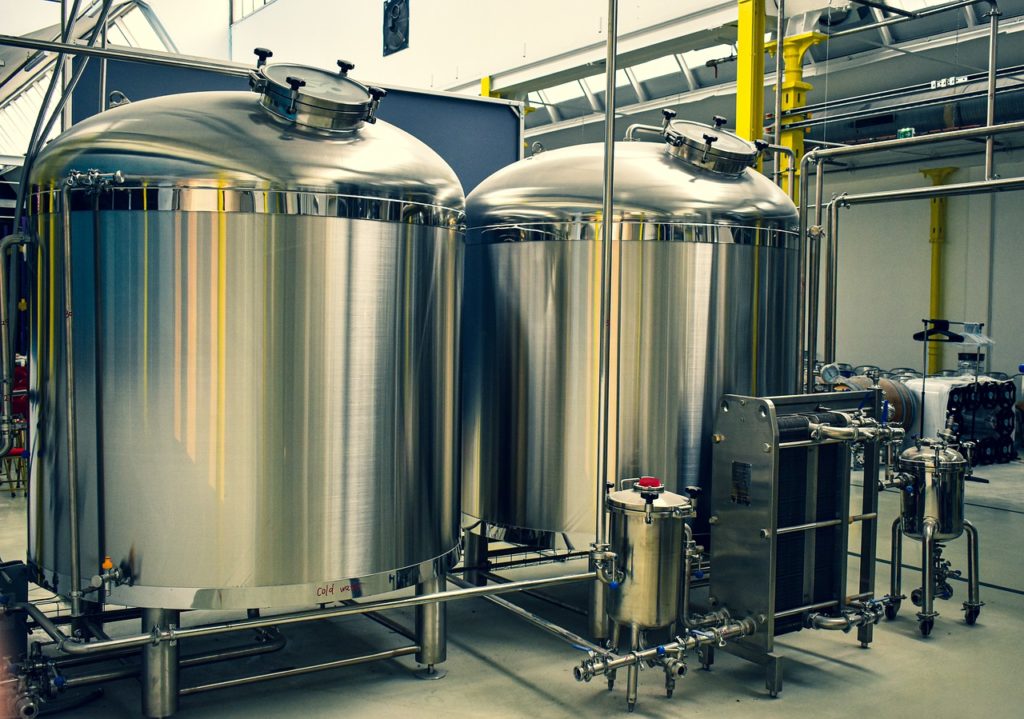By: Tam Nguyen
Alternative sources of proteins are gaining attention for their balanced nutrition, especially among vegans and vegetarians. Proteins are fundamental for our body to function properly, such as to build muscle and drive metabolic activities. When ingested, dietary proteins are broken down into amino acids. Among the amino acids, there are nine that our body cannot synthesize and therefore we must ingest them in our diet. These are known as essential amino acids. So how do vegans, vegetarians, and other non-meat eating individuals get enough protein in their diet?
The answer could be mycoprotein – a meat alternative made from fungi.
The discovery of mycoprotein
As the world population increases, concerns over global food shortage and famine are increasing the demand for new protein-rich foods that are nutritious and safe for human consumption. The first application of this was to turn starch into protein via fermentation. In the 1960’s, thousands of microorganisms were taken and tested to find the ones that were high in proteins, could be grown in anaerobic conditions and created a meat-like texture. In 1974, the UK Food Standard Committee announced that the filamentous fungus Fusarium venenatum could be used to produce mycoprotein, or fungal protein.
Production of mycoprotein
Mycoprotein now can be produced at a large scale using industrial fermenters. At first, the fungus Fusarium venenatum is cultured in fermenters filled with sterilized water and glucose solution. Then, more glucose, ammonia gas and oxygen are added to help the fungus grow continuously. Ammonia gas contains high levels of nitrogen that Fusarium uses to produce amino acids, which in turns makes up proteins. The oxygen and glucose allow the fungus to respire aerobically.

Figure 1: Industrial fermenter. By Mrdidg// Pixabay
Given the optimum pH balance, temperature, nutrient and oxygen conditions, the fungus’s biomass can double every five hours and the whole process of producing mycoprotein can be done in five weeks. At the end of five weeks, mycoprotein goes through the extractor, where it is briefly heated up to 65 degrees to deactivate nucleic acids, followed by drying and chilling to remove water.
The harvested mycoprotein can be used to make vegetarian versions of meat products like vegetarian sausages, burger patties or mince.

Figure 2: Pasta made with vegan meat. By Burst// stocksnap.io
Other fungi-based meat substitutes are made from koji, a Japanese fungus commonly used to make soy sauce. In most fungi-based meat products, filamentous fungi are used because their long, branching fibres create meat-like texture and mimic different cuts of meat.
Health benefits of mycoprotein
Before we can judge which health benefits mycoprotein could bring, let’s have a look at the nutritional values of mycoprotein:
- Energy: 86 kcal
- Protein: 11.5g
- Total carbohydrates: 1.7g
- Total fat: 2.9g
- Fibre: 6.0 g
- Iron: 0.5 g
If we compare these values with those of steamed tofu in the same amount, we could see that mycoprotein is higher in calories, proteins and fibre while lower in fat and iron amount.
With that being said, mycoprotein supplies all the essential amino acids that humans need to make proteins. These include the nine amino acids that our body cannot synthesize: histidine, isoleucine, leucine, lysine, methionine, phenylalanine, threonine, tryptophan, and valine. They serve as precursors for many other metabolic intermediates and products such as neurotransmitters, nucleotides, membrane structures, hormones, and so on.
Other studies have shown the effect of consuming foods that are high in fibre and low in fat, particularly in reducing the risk of chronic diseases. Daily intake of mycoprotein lowered cholesterol concentration by 13%, as reported by Turnbull et al. (1990). Satiety, the satisfaction after consuming foods, after consuming mycoprotein was also shown to be higher than after eating chicken protein (Turnbull et al. (1990), Burley et al. (1993)).
This suggests that mycoprotein has a higher satiating power compared to other foods with similar fiber content. The mechanism of this effect remains unknown, although another component of mycoprotein is predicted to be responsible for this. High fibre content also leads to the studies of mycoprotein in glycemic response (blood sugar levels). It was found that the serum glucose response and the insulin response was lower after the mycoprotein meal compared with the control. With that being said, people with obesity and type-2 diabetes might consider taking mycoprotein as a meat substitute, but of course, doctor’s reference is still needed.
Nowadays, there is a variety of fungus-based meat alternatives in the market, ranging from poultry to seafood, mince to burgers, providing vegetarians with more options. With its potential benefits, the production of mycoprotein and fungus-based meat alternatives contributes to the future of global food security.
Have you tried any meat substitute products? Share your thoughts in the comments below!
References:
Finnigan, T., Wall, B. T., Wilde, P. J., Stephens, F. B., Taylor, S. L., & Freedman, M. R. (2019). Mycoprotein: The Future of Nutritious Nonmeat Protein, a Symposium Review. Current developments in nutrition, 3(6), nzz021. https://doi.org/10.1093/cdn/nzz021Denny, A., Aisbitt, B., & Lunn, J. (2008). Mycoprotein and health. Nutrition bulletin, 33(4), 298-310.
Marlow Foods (2008)
Finnigan, T., Needham, L., & Abbott, C. (2017). Mycoprotein: a healthy new protein with a low environmental impact. In Sustainable protein sources (pp. 305-325). Academic Press.
Featured Image: Photo by LikeMeat on Unsplash. https://unsplash.com/photos/yKiztoqbAHI

About the author:
Tam Nguyen
I am a final year student in Biotechnology at the University of Nottingham (UK). Choosing a career in life science, I want to understand the fundamental elements of life and dedicate to the public engagement to science.






Good price with Good Product. Thumbs up guys. best honey in pakistan
Nutrition is the process of taking in healthy food and using it for growth, metabolism, and repair. In the form of food, we take nutrients: macronutrients and micronutrients.
mycoproteine is really very beneficial for human body & have many vitamins ,thank you for sharing such kind of helping content keep sharing ,we can also use pure because honey have many qualities and benefits like mycoprotein.
Learnt a lot from this post! Cheers 🙂